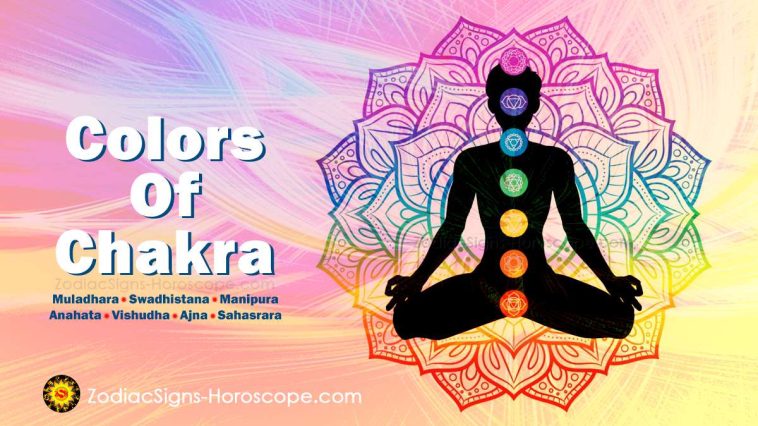Know the Colors of Your 7 Chakras
The chakras (or Sanskrit for “wheel”) are the seven primal energies that exist in our bodies. Each energy center has a purpose and directly corresponds to an area of the body and the organs that surround it. Energies are known to have traits of their own. Fittingly, the ancient Hindus and modern enthusiasts, alike, have made connections between those energies and the Colors of Chakra.
Just as is the case with all that occurs in nature, our bodies mimic our surroundings- specifically, the symbolism in our bodies relates to Mother Earth. When we study the ancient chakras, we typically begin with the innermost (or core) of them and work our way outwards. Think of this as beginning with the hot core of the Earth and moving outward toward celestial space.
Although the chakras are separate entities, they are spirals of energy that intertwine and work with each other in a multitude of both simple and complex ways, each with a pivotal role in our health and well-being. By doing this, we further perfect the necessary balance that we each must have to live happily, healthily, and meaningfully.
Color plays a major role in this, as well, as they each have profound effects on us physically, mentally, emotionally, and spiritually. Certain colors trigger certain urges, feelings, and emotions, meaning that these energy centers are fairly reliant on them. If they malfunction, the body cannot function properly either.
Colors of Chakra: Our 7 Chakras
Muladhara
The Muladhara, or root chakra, is located at the base of our spine – the most basal and crucial element of our physique. It grounds us and is largely in charge of most other functions, especially when concerning moving along the physical plane. Like the core of the Earth, the Muladhara has been characterized by a vibrant red color, denoting the radiant heat that projects from our center. Red has been accepted as an identifier of the seat of our most primal power and definitive action.
Swadhistana
Swadhistana, or the sacral chakra, sits in the genital area. Although not as bright as the shades of red, the orange sacral omits a pleasant and sensual glow. In addition to facilitating sexual prowess and reproduction, this chakra serves to inspire deep creative thinking in us. By combining our most powerful sources of creativity, our souls can procreate positively. The energy of this chakra thrives on this unity, allowing us to experience primal connections through an exploratory process.
Manipura
The solar plexus chakra, or Manipura, shines in yellow at our navel region. As the guardian of our abdominal organs, Manipura stands for our power and the positive use of it, in addition to aiding in pleasant and healthy digestion. In nature, yellow is indicative of a new dawning, which for us relates to personal revelations and awareness. More obviously, the sun is seen as being the central yellow orb that sustains life- our solar plexus chakra does just that. As well as physical sustenance, yellow provokes a fullness of focus on our inner intelligence.
Anahata
As we move to the surface of the Earth we are met with two distinct colors: green land and blue sea. The green represents growth and new hope, all of which take place in our hearts. Anahata is affiliated with compassion and our ability to love. This green chakra reminds us of the importance of our interconnectedness with others and our surroundings and calls us back to the rhythm of life.
Vishudha
Blue, on the other hand, is indicative of our throat chakra, or Vishudha. Like the seas and all bodies of water, Vishudha represents pureness and clarity, especially in our physical expressions. More literally, we use our throats to verbally express ourselves, and we should aim to always do this with precision. Likewise, we must also have the ability to understand the expressions of others clearly.
Ajna
Moving outward and toward celestial space, the next chakra, Ajna, is represented with indigo. As the chakra of our third eye, Ajna concerns depth, perception, and, of course, physical vision. We use this chakra to channel our intuition and connect our perceptions. This deep purple allows us to see more deeply, beyond any realm of illusion; it correlates to a time of new understanding.
Sahasrara
At the top of our bodies, we find the final and darkly hued chakra: Sahasrara. Commonly called the crown chakra, this violet orb concerns our awareness and sense of being within the greater universe. Used to achieve the ultimate enlightenment, Sahasrara allows us to identify personally with the infinite and the divine. It is the culmination of our beings and satisfies a sense of wholeness and oneness with all that is seen and unseen.
Conclusion: Your 7 Chakras and Their Colors
By understanding these basic color associations, you will allow your body and mind to work more efficiently. You can become more attuned to yourself and the energies of the objects and items around you. Invoke the colors and allow them to inspire you.


